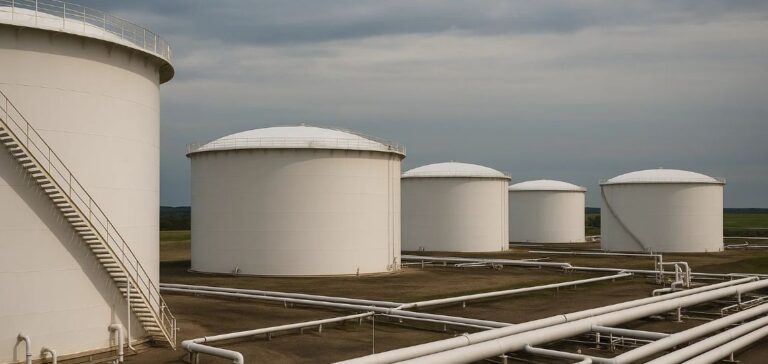Commercial crude oil inventories in the United States saw an unexpected increase for the second consecutive week, reaching 443.2 million barrels as of May 16, according to the Energy Information Administration (EIA). This 1.3 million barrel increase contrasts with analysts’ expectations of a 1.1 million barrel decline, based on data compiled by Bloomberg on May 22.
Higher imports and a notable statistical adjustment
The increase in inventories occurred despite a rise in refinery utilisation, which reached 90.7% compared to 90.2% the previous week. Typically, such an uptick in refining activity reduces stock levels as crude is processed more rapidly. However, US crude imports rose by 4.25% to 6.1 million barrels per day, partially offsetting the expected drawdown.
The EIA also implemented a statistical adjustment, adding 204,000 barrels per day to market supply figures. This adjustment, unrelated to actual weekly activity, contributed to the observed increase.
Strategic reserve reaches highest level since 2022
Simultaneously, the US Strategic Petroleum Reserve rose to 400.5 million barrels, marking its highest level since October 2022. This increase strengthens response capacity to potential supply shocks, though it does not directly reflect short-term market dynamics.
Crude exports also rose by 4.10%, easing the inventory impact of higher imports. US crude oil production remained stable at 13.39 million barrels per day, contributing little change to the overall supply level.
Immediate reactions on oil markets
Shortly after the report’s release, oil prices declined slightly. The West Texas Intermediate (WTI) barrel for June delivery fell by 0.05% to $62.53, while Brent crude for July delivery dropped by 0.03% to $65.36. These movements reflect cautious market reactions amid a supply outlook exceeding short-term expectations.
According to analysts quoted by Bloomberg, the reported figures may continue to shape expectations regarding domestic demand and production decisions in the coming weeks.






















